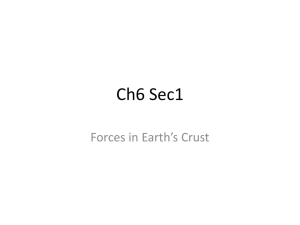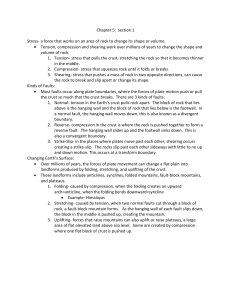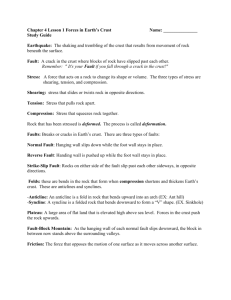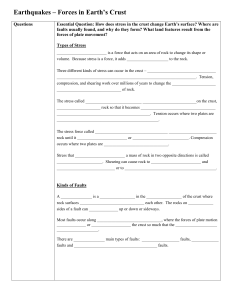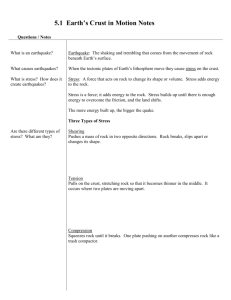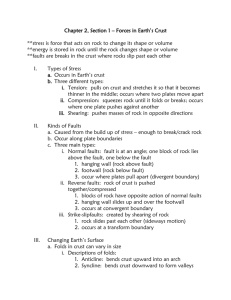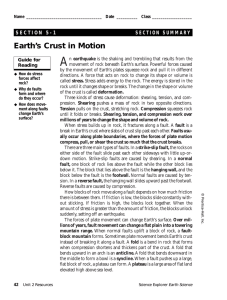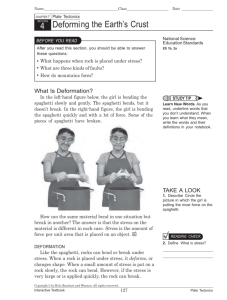Forces in Earth`s Crust
advertisement
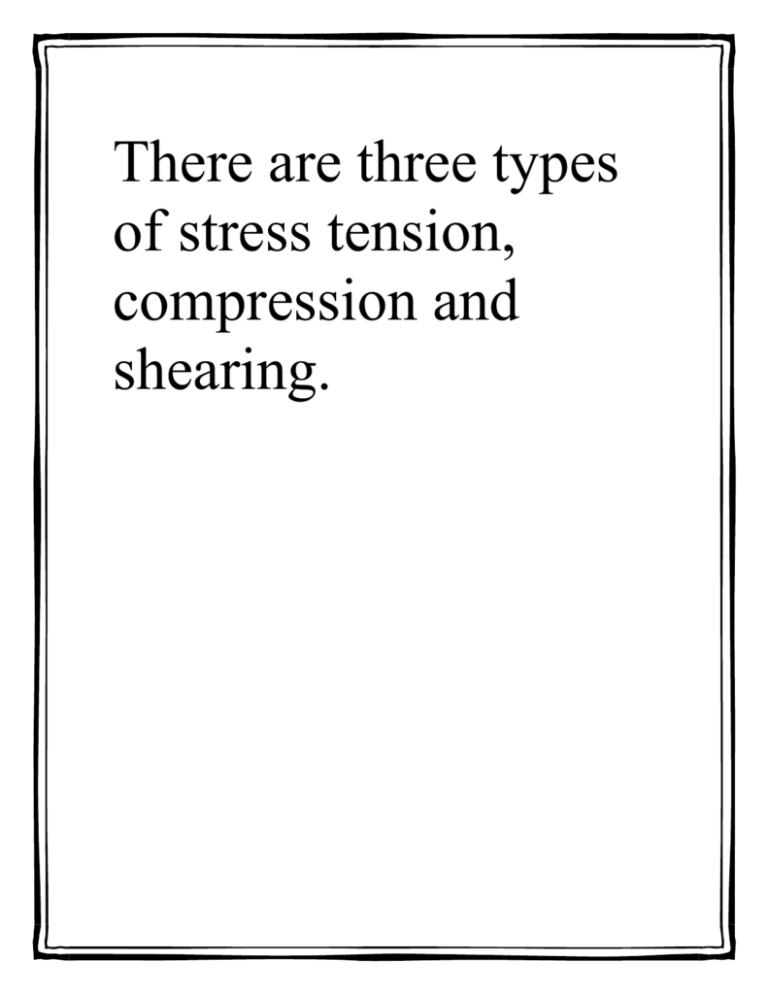
There are three types of stress tension, compression and shearing. The stress force called tension pulls on the crust, stretching rock so that it becomes thinner in the middle. This occurs when two plates are moving apart. The stress force called compression squeezes rock until it folds or breaks. This happens when plates are moving together. Stress that pushes a mass of rock in two opposite directions is called shearing. . This can cause a rock to break and slip apart or to change its shape. When enough stress builds up in a rock the rock breaks creating a faults. Most of these faults occur along plate boundaries where the forces of plate motion push or pull the crust so much the crust breaks. There are three types of main faults: normal, reverse, and strike-slip. The block of rock that hangs above is called the hanging wall. The rock that lies below is called the footwall. In a normal fault the fault is at an angle. The hanging wall slips down relative to the footwall. In places where the rock of the crust is pushed together, compression causes reverse faults to form. It has the same structure as a normal fault, but the blocks move in the opposite directions. In places where plates move past each other, shearing creates strike-slip faults. There is little up or down motion with these types of faults. If it forms the boundary between two plates it is called a transform boundary. The San Andreas Fault in California is an example. The forces produced by the movement of Earth’s plates can fold, stretch, and uplift the crust. FOLDING A fold in rock that bends upward is called an anticline. A fold in rock that bends downward to form a valley is called a syncline STRETCHING When two normal faults cut through a block of rock, a faultblock mountain forms. UPLIFT A plateau is a large area of land elevated high above sea level. Some plateaus form when forces in Earth’s crust push up a large, flat block of rock.
